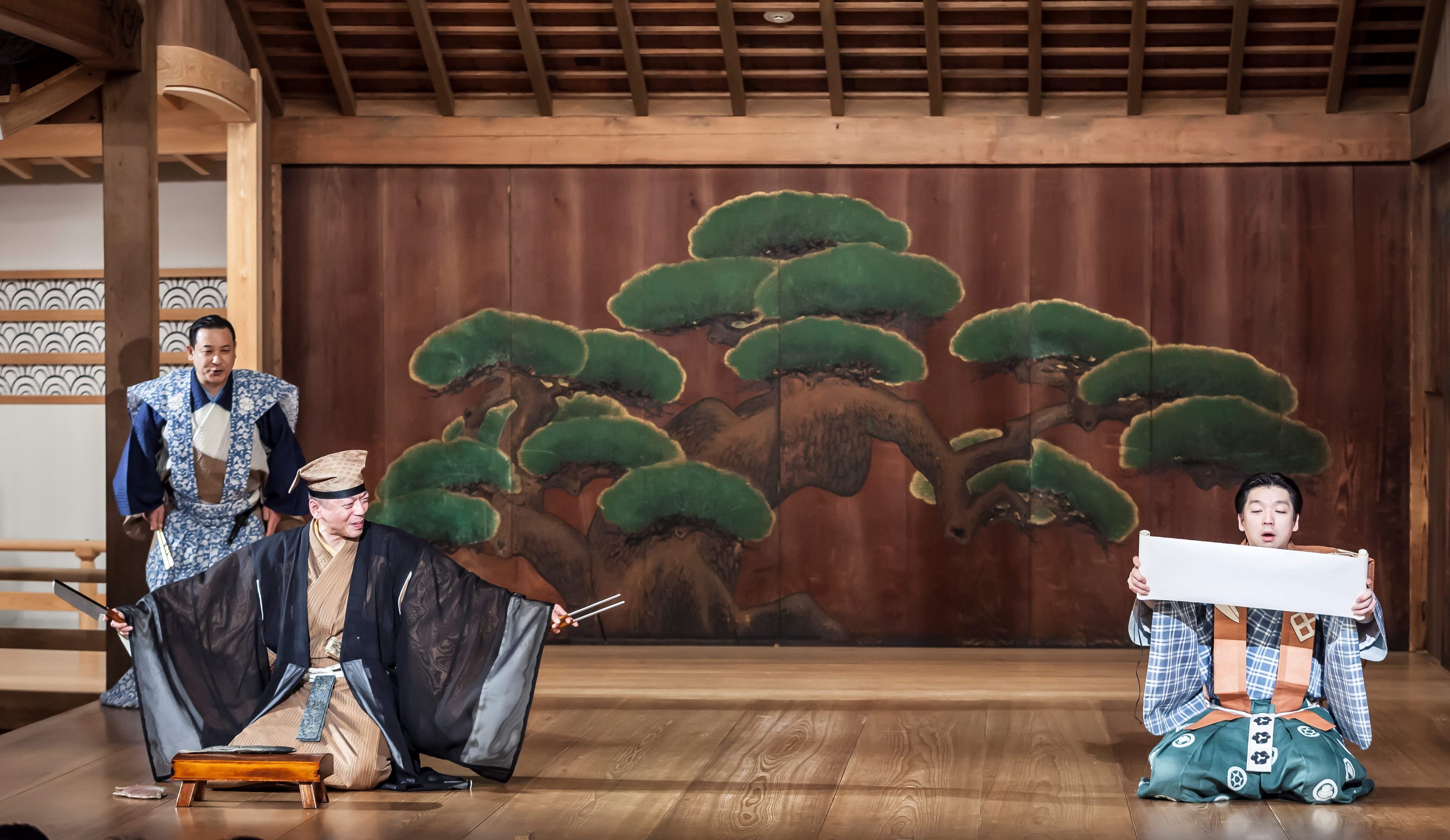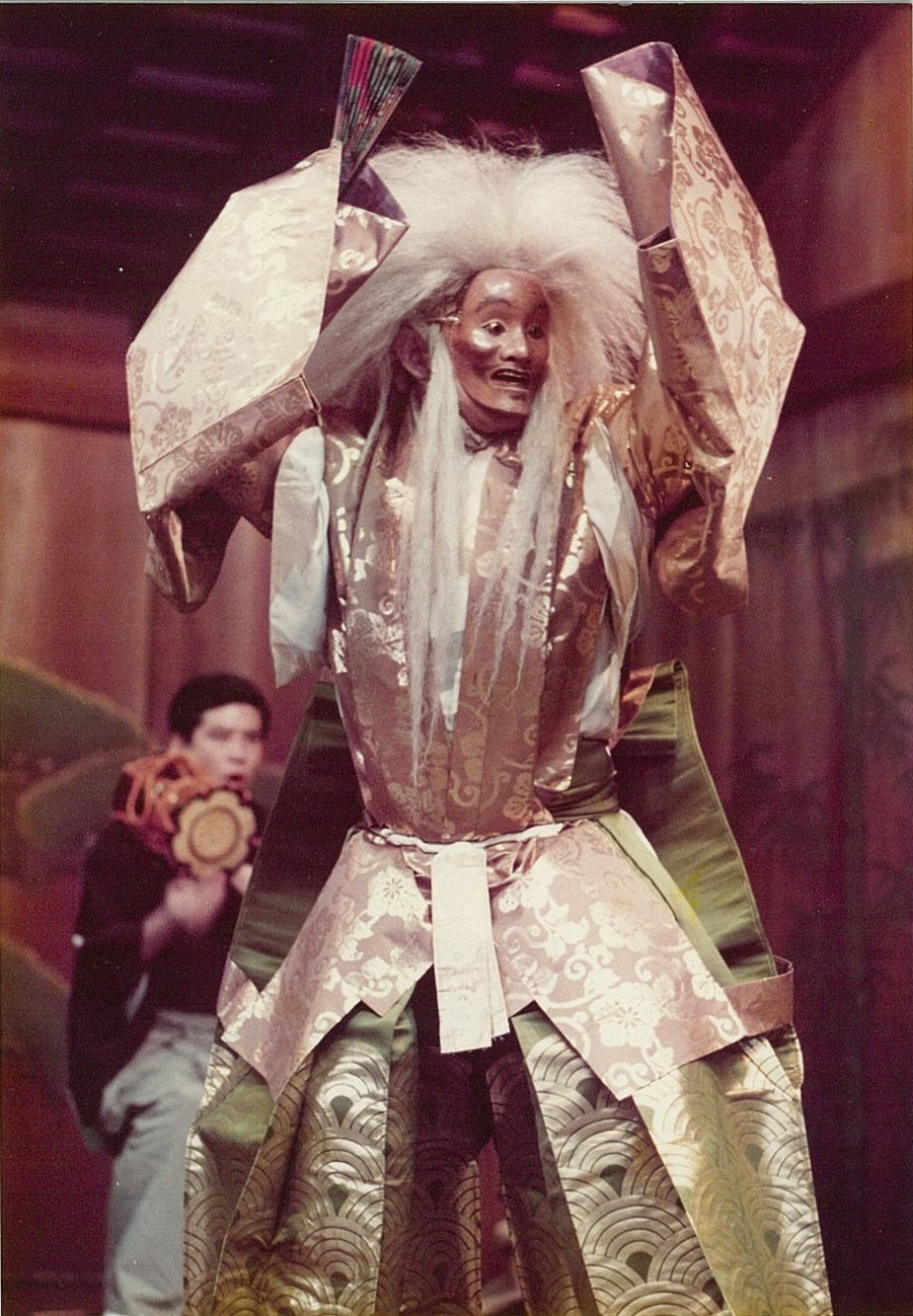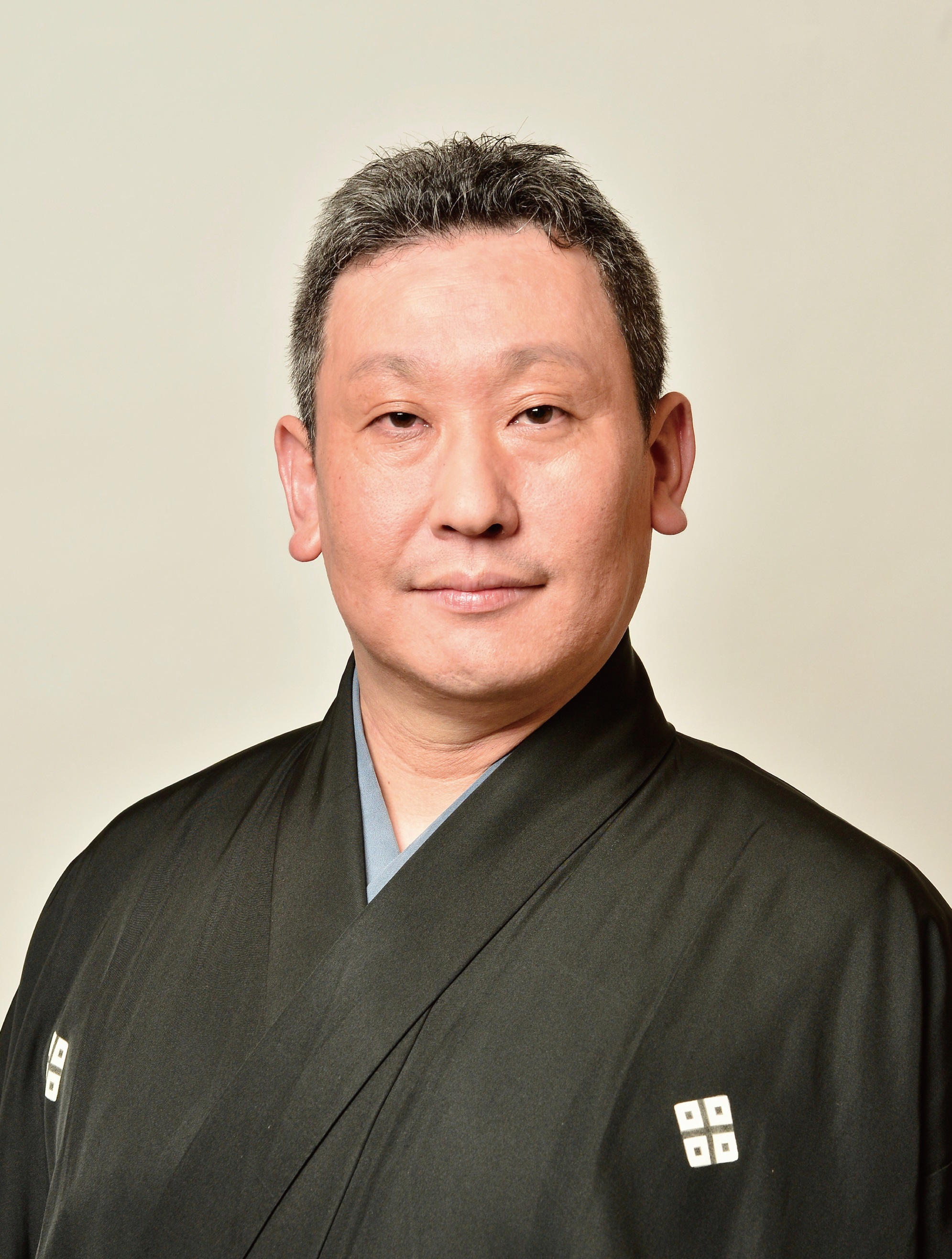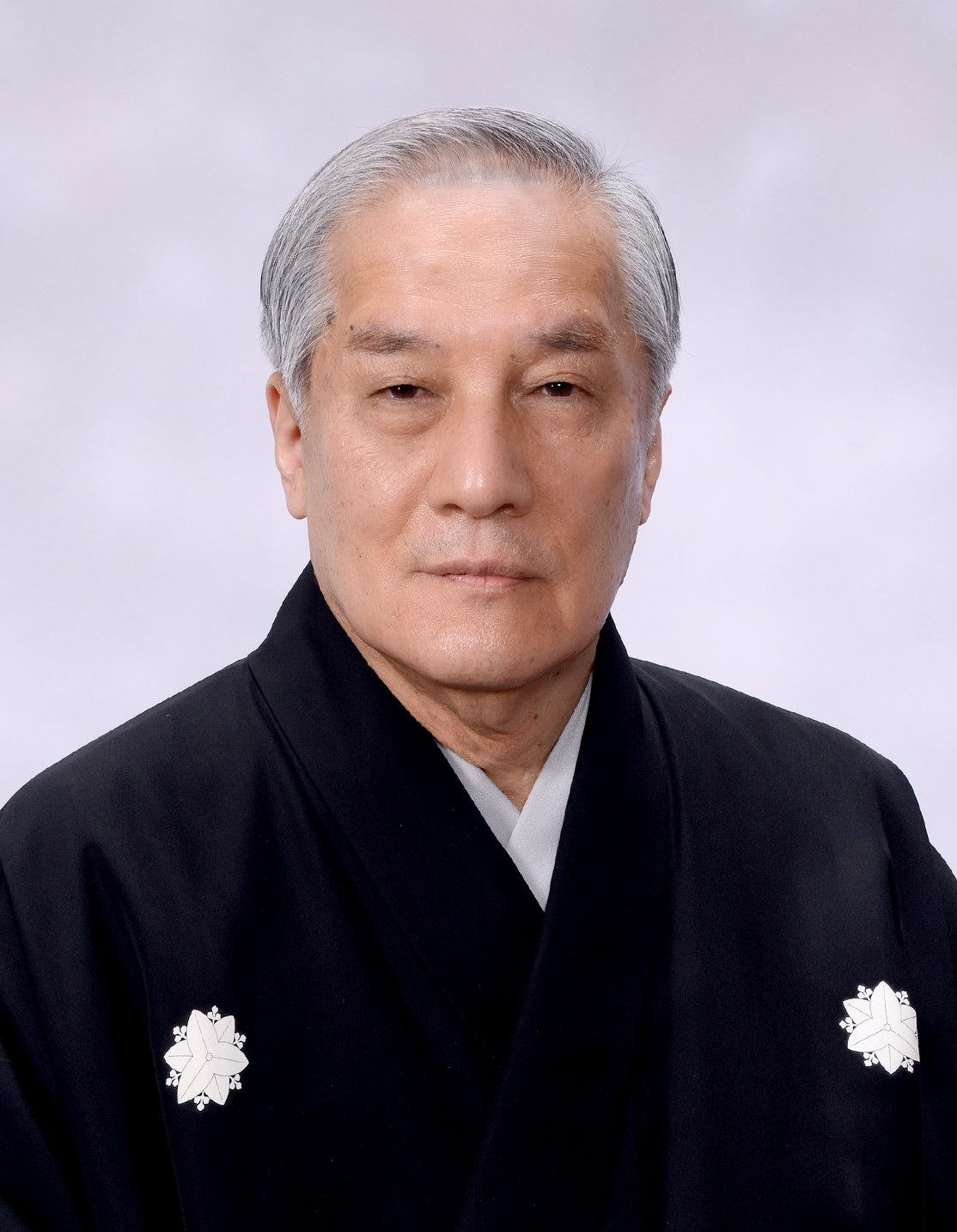An Evening of Noh and Kyogen 2023
Every year in autumn, the Japan Foundation Kyoto Office organizes an event called “An Evening of Noh and Kyogen” to give people an opportunity to experience traditional Japanese culture, inviting international students, the Japan Foundation Fellows, and those enrolled at the Japanese-Language Institute, Kansai to join us.
From FY2020 to FY2022, the event was held with online video streaming to prevent the spread of COVID-19 infection, but in FY2023, with the easing of measures against COVID-19, the event will resume performances with an audience for the first time in four years.
| Date and time | Friday, November 24, 2023 from 6:30 p.m. (Doors will open at 6:00 p.m.) |
|---|---|
| Venue | Kongo Noh Theatre (karasuma-nakadachiuri, kamigyo-ku, Kyoto) Tel: +81-(0)75-441-7222 Flyer: An Evening of Noh and Kyogen 2023 (PDF:9.36MB) |
| Program |
<Kyogen> <Noh> |
| Organizers | The Japan Foundation Kyoto Office The Japan Foundation Japanese Language Institute, Kansai |
| Collaboration | The Kongo Noh Theatre Foundation Shigeyama Kyogen Troupe Art Research Center, Ritsumeikan University |
| Endorsement | Kyoto Prefecture, Kyoto City, Kyoto City Tourist Association, The Kyoto Shimbun Co., Ltd, Kyoto Arts and Culture Foundation |
| Admission Fees (all free seating) |
¥3,500 (students: ¥2,000) Group discount (20 people or more) ¥3,150 (students: ¥1,800) |
| Tickets will be Available from Friday, September 20 at |
Kongo Noh Theatre (Box Office) |
Programme Synopsis
Kyogen:SOHACHI (A Priest and a Cook)

The master of a house puts up a notice on a bulletin board in hopes of hiring a priest and a cook. Shortly thereafter, two men show up at his house: a priest who has recently been a cook and Sohachi, a cook who has recently been a priest. Hiring both, the master instructs the priest to recite the Lotus Sutra and entrusts Sohachi with the task of preparing dishes using sea bream and carp. Bewildered by their unfamiliar tasks, the two seek advice from each other and agree to swap roles. Clad in a cook’s attire, Sohachi recites the sutra, while the former cook, now dressed as a priest, starts cooking.
A priest-turned-cook and a cook-turned-priest find themselves working for the same master, setting the stage for a memorable slapstick comedy.
<Kyogen>
Kyogen is a form of comic theater that emerged during Japan’s Muromachi period (around 1336 to 1573) and developed alongside Noh. It traces its origins to “Sarugaku,” a form of Japanese entertainment dating back to the late Heian period (mid-12th century). Later, the term “Nohgaku” was created to encompass these twin arts of Noh and Kyogen. While Noh is a tragic musical play, Kyogen is a comedy based on spoken dialog and wordplay. Performed as an interlude between acts of the more solemn Noh play, Kyogen creates comic relief, inducing laughter from the audience like a circus clown.
Stories of blunders in everyday life or making fun of the little quarrels among couples are the favorite motifs of Kyogen, a laughter theme unchanging even in modern days. Kyogen is a universal form of art that has made people laugh for centuries and will for centuries to come.
Noh: NUE(Nightbird) hakuto (special performance)

A traveling monk arrives at the village of Ashiya in Settsu Province. Seeking lodging for the night, he approaches a villager, but his request is declined. The monk decides to spend the night at a small temple nestled on a riverbank. Rumor has it that an eerie presence haunts the place, emitting a luminescent glow night after night. A boatman emerges, revealing his identity as the ghostly embodiment of the monster nue. The apparition proceeds to reenact its life story, recounting how it met its demise at the hands of the samurai warrior Minamoto no Yorimasa. Eventually, the ghost vanishes amid the night waves.
That night, as the monk recites a sutra, the ghost of the monster nue appears in its true form. The ghost recounts the tale of Yorimasa’s rise to fame through his triumphant vanquishing of the monster and tells of how the emperor bestowed upon Yorimasa an imperial sword. Bereft of hope in attaining Buddhahood, the ghost descends into the depths of the sea, seeking salvation, longing for the light of Buddha to shine upon its tormented spirit like the moon casting light on the edge of the mountains.
The nue is a legendary monster with the head of a monkey, the tail of a snake, and the limbs of a tiger. It produces bird-like cries that resemble those of White’s thrush. This Noh drama is a tale of man versus monster, one that appears in The Tale of the Heike, with Yorimasa fearlessly slaying the nue and earning accolades for his courage. The drama also portrays the perspective of the defeated monster, capturing its sorrowful demise. Similar in many ways to shuramono (warrior plays), the work contains numerous riveting scenes that leave a lasting impression.
<Noh>
Noh is a form of theater that emerged during the Muromachi period (1336-1573), brought to its perfection by the father-and-son team of Kanami and Zeami, and since performed countless times to this day. It is a mask drama, but not all performers are masked. Masks are worn only by the main character (shite) and the attendant (tsure). When the main character is not masked, the face is kept completely expressionless, as if wearing a mask. Unlike other forms of theater, Noh does not use scenery or intricate props. Simple props (tsukurimono) sometimes used in Noh plays are intended to be more symbolic than realistic. Noh integrates elements such as masks and simple props in a dance-based performance, inviting viewers to unleash their imaginations and immerse themselves in the world created onstage. In Noh, dialogue is sparse. Rather, Noh sequences highlight the narrative of the main character, incorporating elements of poetry. Since Noh traces its origins to religious rites, many Noh sequences feature a deity in the lead role. This category of Noh is termed “god plays” (kami-noh or waki-noh). Noh plays can be divided into five categories: god plays, warrior plays (shura-noh), women plays (kazura-noh), miscellaneous plays (zatsu-noh), and demon plays (oni-noh or kiri-noh). Of the five categories, the warrior plays center on a warrior who, after a lifetime of battle, is condemned to wander in Warrior Hell, a world of eternal struggle within Buddhist philosophy. The women plays feature a female protagonist from the literature of the Imperial Court, embodying Zeami’s concept of yugen, an aesthetic term suggesting quiet elegance and subtle beauty.
Profile
SHIGEYAMA Sengoro

Born in 1972. Eldest son of Shigeyama Sensaku V. Birth name Masakuni.
First appeared on stage at the age of four as the protagonist of “Iroha.” Subsequently led such projects as the Hanagata Kyogen Kai, the Kyogen Shogekijo, “TOPPA!,” and the Kokoromi no Kai in his efforts to win new fans not just for Kyogen but also for Noh theater itself. Currently, he is working to communicate the appeal of Kyogen to a wider age-range of audiences by leading such projects as the Shigeyama Kyogen Kai, the “Cutting Edge KYOGEN” group (a revamped Hanagata Kyogen Kai), the Kashizuki no Kai in partnership with his younger brother, Shigeru, and the Waraenai Kai in partnership with Rakugo specialist Katsura Yonekichi. He has also actively collaborated with artists in other theatrical genres, including Yan Qinggu of the Shanghai Jingju Theatre Company and the Sichuan opera face changing master Jiang Peng. Succeeded to Shigeyama Sengoro XIV in 2016. Recipient of the Agency for Cultural Affairs’ New Artist Award of the National Arts Festival in 2005, recipient of Kyoto Prefectural Culture Award’s Distinguished Service Prize in 2008.
KONGO Hisanori

Born in Kyoto in 1951 as the eldest son of Kongo Iwao, the 25th-generation head of the lineage, Hisanori trained under his father from an early age. In September 1998, he became the 26th-generation head of the Kongo school of Noh, and in May 2005 oversaw the completion of the relocation of the Kongo Noh Theatre to the west side of Kyoto Imperial Palace. He has been designated by the Japanese government as a Holder of Important Intangible Cultural Property (collective recognition).
Along with “Mai-Kongo” (Dance Kongo), an ornate and dynamic style of acting unique to the Kongo school, he also specializes in the graceful and elegant style known as “Kyo-Kongo” (Kyoto-style Kongo) and is the only head of any of the five shite-kata schools of Noh to be based in the Kansai area. Beginning with his turn as director of the troupe that staged the Kongo school’s inaugural overseas performances in Canada and the United States, he has a wealth of overseas performing experience in countries such as Italy, France, Spain, Portugal, and Russia.
A recipient of the Kyoto Municipal New Artist Award and the Kyoto Prefectural Culture Award’s New Artist Prize and Distinguished Service Prize, he has also been honored with a Cultural Merit Award by the city of Kyoto. He is the recipient of the 67th Minister of Education, Culture, Sports, Science and Technology’s Art Encouragement Prize and in 2018 was awarded the Medal with Purple Ribbon, which is conferred by the Government of Japan to individuals who have contributed to academic and artistic developments. In 2023, he received the Imperial Prize and the Japan Art Academy Prize, and he was designated as a Living National Treasure for each of the important intangible cultural properties of Nohgaku.
As well as serving as President of the Kongo Nohgakudo Foundation, President of the Kongo Nohgaku-kai, President of the Kongo-kai, and Chairman of the Nihon Nohgaku-kai, he is also a visiting professor at the Kyoto City University of Arts and the author of Kongo-ke no men [Masks of the Kongo Lineage] and Kongo soke no noh-men to noh-shozoku [Noh Masks and Noh Costumes of the Kongo Lineage].
[Contact Us]
The Japan Foundation Kyoto Office
(3rd Floor, Kyoto International Community House 2-1 Torii-cho, Awataguchi, Sakyo-ku, Kyoto)
Tel: +81-(0)75-762-1136
- About Us Top
- About the Japan Foundation
- Donations
- News & Topics
- Links
